#direct potable reuse
Note
Hello! I saw your post about wastewater treatment and thought you might like to read about what my city did during a major drought about a decade ago. To this day I still don't understand it, but it was apparently a big deal in treatment circles?
https://www.tpomag.com/editorial/2016/12/how_wichita_falls_turned_a_drought_into_enlightenment
Hey! I'm real behind on my inbox but this is real cool! Here's the link you shared.
Hmmm, let me see if I can explain what's happening here.
So one important thing to know is that drinking water, in very broad terms, comes from one of two places: 1) an aquifer (some kind of underground water source. might be a cave but is probably a crack in a rock or a sandy/gravely layer under the surface), or 2) a surface water body (lake, river, reservoir). In very general terms, surface water needs extra treatment. Most aquifers (though not the kind that are just caves) get their water after it's filtered through the dirt and rock above it, which filters out a lot of contaminants. This means that it can start out a lot cleaner. (Though not if the rocks it filters through are salty or high in arsenic--aquifers are preferred, but if they're not being used there's usually a good reason.)
Surface water, on the other hand, has shit in it. Literally. The fish shit in it. The birds flying overhead shit in it. Dirt washes into it. People dump stuff into it. Hopefully they have a permit for that, sometimes they don't. Algae grows in it. So surface water drinking water treatment plants usually need to have much more intense treatment than groundwater (aquifer) drinking water because there's more *stuff* to filter out.
So when the drought happened in the early 2010s, the lakes that were being used for drinking water got low. Enter secondary wastewater.
Secondary wastewater is wastewater that has already been through a first treatment stage. I believe--and someone can correct me on this if I'm wrong--that first stage is typically letting the water sit so that the majority of the solids (*cough*) can filter out. Secondary wastewater may or may not be clean enough to release, depending on various factors, but it is much cleaner than what came in.
So what they've done here is take that partially treated wastewater and run it to the drinking water plant. Very serendipitously, the drinking water plant already had microfiltration and reverse osmosis filtration set up for incoming water, because they'd previously used a brackish (salty) water source that needed the extra filtration. Both of those forms of filtration also happen to be the gold standard for filtering wastewater for drinking water. The only thing that could've made it better would be if they'd had UV treatment too. They then took this now doubly-pretreated water and mixed it with untreated lake water. Which meant that the water went through the whole regular lake water treatment process as well. And since lake water is surface water, we know that was extra thorough too. It also says in the article that they were monitoring the whole process extra carefully to make sure no wastewater contaminants were making it through. And no one got sick!
Not every water treatment plant will be lucky enough to have both extra filtration in place and access to secondary wastewater that's clean enough to use this way, but it's still extra cool that that was the case here! A lot of people are grossed out by direct potable reuse of wastewater (which is industry-speak for pumping watewater directly to your drinking water plant to treat and use). But honestly, I don't think it's any grosser than drinking treated surface water. In some ways, secondary wastewater is actually better, because you at least know basically what happened to it, while surface water has just been wandering free in nature, getting up to who knows what...
Thanks for the ask!
1 note
·
View note
Text
"Namibia is the driest country in Sub-Saharan Africa, and home to two of the world’s most ancient deserts, the Kalahari and the Namib. The capital, Windhoek, is sandwiched between them, 400 miles away from the nearest perennial river and more than 300 miles away from the coast. Water is in short supply.
It’s hard to imagine life thriving in Windhoek, yet 477,000 people call it home, and 99 per cent of them have access to drinking water thanks to technology pioneered 55 years ago on the outskirts of the city. Now, some of the world’s biggest cities are embracing this technology as they adapt to the harshest impacts of climate change. But Namibia leads the way.
How did this come about? In the 1950s, Windhoek’s natural resources struggled to cope with a rapidly growing population, and severe water shortages gripped the city. But disaster forced innovation, and in 1968 the Goreangab Water Reclamation Plant in Windhoek became the first place in the world to produce drinking water directly from sewage, a process known as direct potable reuse (DPR).
That may sound revolting, but it’s completely safe. Dr Lucas van Vuuren, who was among those who pioneered Windhoek’s reclamation system, once said that “water should not be judged by its history, but by its quality”. And DPR ensures quality.
This is done using a continuous multi-barrier treatment devised in Windhoek during eight years of pilot studies in the 1960s. This process – which has been upgraded four times since 1968 – eliminates pollutants and safeguards against pathogens by harnessing bacteria to digest the human waste and remove it from the water. This partly mimics what happens when water is recycled in nature, but Windhoek does it all in under 24 hours...
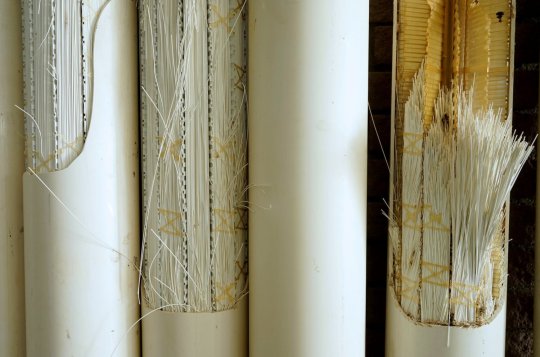
Pictured: These ultrafiltration membranes help to remove bacteria, viruses and pathogens. Image: Margaret Courtney-Clarke
“We know that we have antibiotics in the water, preservatives from cosmetics, anti-corrosion prevention chemicals from the dishwasher,” Honer explains. “We find them and we remove them.”
Honer adds that online instruments monitor the water continuously, and staff ensure that only drinking water that meets World Health Organisation (WHO) guidelines is sent to homes. If any inconsistencies are detected, the plant goes into recycle mode and distribution is halted until correct values are restored.
“The most important rule is, and was, and always will be ‘safety first’,” says Honer. The facility has never been linked to an outbreak of waterborne disease, and now produces up to 5.5m gallons of drinking water every day – up to 35 per cent of the city’s consumption.
Namibians couldn’t survive without it, and as water shortages grip the planet, Windhoek’s insights and experience are more important than ever.
Interest from superpowers across the globe
In recent years, delegations from the US, France, Germany, India, Australia, Singapore, and the United Arab Emirates have visited Windhoek seeking solutions to water shortages in their own countries.
Megadrought conditions have gripped the US since 2001, and the Colorado River – which provides 40 million people with drinking water – has been running at just 50 per cent of its traditional flow. As a result, several states including Texas, California, Arizona and Colorado are beginning to embrace DPR.
Troy Walker is a water reuse practice leader at Hazen and Sawyer, an environmental engineering firm helping Arizona to develop its DPR regulations. He visited Windhoek last year. “It was about being able to see the success of their system, and then looking at some of the technical details and how that might look in a US facility or an Australian facility,” he said. “[Windhoek] has helped drive a lot of discussion in industry. [Innovation] doesn’t all have to come out of California or Texas.”

Pictured: The internal pipes and workings of Namibia's DPR plant. As water becomes scarcer in some parts, countries are looking to DPR for solutions. Image: Margaret Courtney-Clarke
Namibia has also helped overcome the biggest obstacle to DPR – public acceptance. Disgust is a powerful emotion, and sensationalist ‘toilet to tap’ headlines have dismantled support for water reuse projects in the past. Unfortunately, DPR’s biggest strength is also its biggest weakness, as the speed at which water can re-enter the system makes it especially vulnerable to prejudice, causing regulators to hesitate. “Technology has never been the reason why these projects don’t get built – it’s always public or political opposition,” says Patsy Tennyson, vice president of Katz and Associates, an American firm that specialises in public outreach and communications.
That’s why just a handful of facilities worldwide are currently doing DPR, with Windhoek standing alongside smaller schemes in the Philippines, South Africa and a hybrid facility in Big Spring, Texas. But that’s all changing. Drought and increased water scarcity worldwide are forcing us to change the way we think about water.
Now, the US is ready to take the plunge, and in 2025, El Paso Water will begin operating the first ‘direct to distribution’ DPR facility in North America, turning up to 10m gallons of wasterwater per day into purified drinking water – twice as much as Windhoek. San Diego, Los Angeles, California, as well as Phoenix, Arizona are also exploring the technology."
Of course, DPR is not a silver bullet in the fight against climate change. It cannot create water out of thin air, and it will not facilitate endless growth. But it does help cities become more climate resilient by reducing their reliance on natural sources, such as the Colorado River.
As other nations follow in Namibia’s footsteps, Windhoek may no longer take the lead after almost six decades in front.
“But Windhoek was the first,” Honer reminds me. “No one can take that away.”"
-via Positive.News, August 30, 2023
#namibia#africa#desert#water shortage#water conservation#dpr#potable water#water recycling#clean water#drought#united states#colorado river#science and technology#sanitation#good news#hope
2K notes
·
View notes
Note
Hello! Engineering related question if you don't mind me asking:
I was doing some research on grey-water recycling, and am not sure why it isn't the standard in the majority of the world. It seems to reduce water usage by a reasonable amount (maybe 20%) without having significant downsides (maybe a small upfront cost?)
Despite this, it isn't very common. Why?
I don't mind, I love engineering questions!
The prime reasons are: cost and regulations.
Grey water recycling still takes tanks, pumps, and other filtration systems that require tending. While it's not particularly more expensive than a septic system up front, its still an extra cost that most clients don't want to pay for, plus long term maintenance costs (too which the client sees only these, not the reduced water bill, its just how most people see things: big number upfront bad). Plus, at least for American housing, the house would need special plumbing for grey water collection and use, which would cost you more from the architect or from a plumbing company for retrofitting an existing residence.
Second is regulation. I know some states and countries are changing this, but grey water still has limited usage. For Arizona, USA, it can only be used for gardening and up to a certain amount (400 gallons per day) (https://www.azdeq.gov/graywater) and worse again, only on non-food plants that aren't trees or bushes. Arizona is currently working on changing regulations for Direct Potable Reuse (taking wastewater and treating it enough to reuse as potable water) which would likely see some changes to the grey water reuse rules as well since our state is on the cusp of water scarcity.
Grey water reuse can be a huge help, and since it can be used for flushing toilets (one of the larger wastewater producers of the house), gardening, and some other minor uses, it tends to be a good reduction to water use. The biggest hurdles are regulations and cost, since unless regulations lighten, there isn't anywhere to go, and most clients want the cheapest upfront cost, not the cheapest long term cost. The best way forward would be for regulations to lighten AND for the government to offer rebates like they do for solar panels. That'd incentivize it financially and make it more legal, thus more would do it.
14 notes
·
View notes
Text
Enhancing Water Management with Multiple Effect Evaporators (MEE)
Water scarcity is a pressing global issue, exacerbated by increasing population, industrial demands, and climate change. As industries and municipalities strive to address this challenge, innovative technologies become vital for sustainable water management. One such technology is the Multiple Effect Evaporator (MEE). At Goldfinch Evaporation Systems, we specialize in designing and manufacturing cutting-edge MEE systems that significantly enhance water management processes. In this blog, we will delve into how MEEs work, their benefits, and why they are a crucial component in addressing water scarcity.
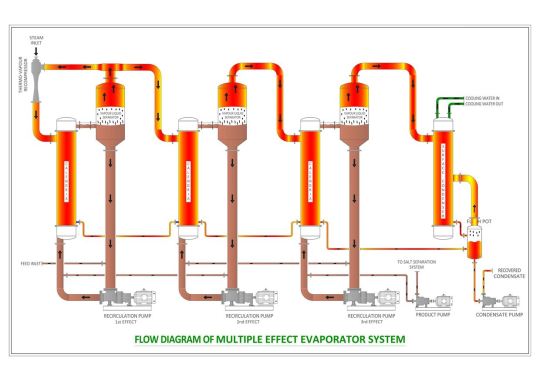
What is a Multiple Effect Evaporator (MEE)?
A Multiple Effect Evaporator (MEE) is a sophisticated system used to concentrate solutions, typically by removing water through evaporation. It operates by utilizing steam or heat to evaporate water from a liquid, which then condenses and is collected. The key feature of an MEE system is its ability to perform this process in multiple stages or "effects," which improves efficiency and reduces energy consumption.
How MEE Systems Work
MEE systems consist of several evaporators arranged in a series. Each effect operates at progressively lower pressures, allowing steam from one effect to be used as the heat source for the next. Here’s a simplified overview of how an MEE system functions:
Feedwater Entry: The feedwater enters the first evaporator, where it is heated by steam or another heat source.
Evaporation: The heat causes the water to evaporate, leaving behind concentrated solutes. The steam produced in this stage is collected and directed to the next effect.
Condensation: In the subsequent effects, the previously generated steam serves as the heating medium, evaporating additional water from the feedwater in each stage.
Final Concentration: The process continues through multiple stages until the desired concentration is achieved.
Condensate Recovery: The condensed steam from each effect is collected and often reused, enhancing energy efficiency.
Benefits of Multiple Effect Evaporators
1. Efficient Desalination
One of the primary applications of MEEs is in desalination, where they effectively remove salts and impurities from seawater or brackish water. By using MEEs, industries and municipalities can produce clean, potable water from non-potable sources. This is particularly beneficial in regions facing severe water shortages, as it enables the conversion of abundant saline water into valuable fresh water.
2. Energy Efficiency
Energy consumption is a significant concern in water treatment processes. Traditional evaporators often require substantial amounts of energy, leading to high operational costs. MEEs address this issue by reusing steam across multiple stages, which minimizes energy consumption. In each effect, the steam from the previous stage is utilized as the heat source, reducing the need for additional heating. This energy-efficient approach lowers operational costs and contributes to more sustainable practices.
3. High Water Recovery
Achieving high water recovery rates is crucial for effective water management. MEEs excel in this area by maximizing the amount of water recovered from the feed solution. This high recovery rate ensures that a significant portion of the water is recycled and reused, reducing the overall need for fresh water and supporting sustainable practices.
4. Scalability
MEEs are highly scalable, making them suitable for a range of applications from small-scale operations to large industrial facilities. Whether you're operating a small wastewater treatment plant or managing a large-scale industrial process, MEEs can be tailored to meet your specific needs. This scalability allows for flexibility in adapting to changing demands and expanding operations as required.
5. Reduced Environmental Impact
Environmental sustainability is a critical consideration in modern industrial processes. MEEs contribute to this by offering environmentally friendly wastewater treatment solutions. By reducing energy consumption and enhancing water recovery, MEEs help lower the overall environmental footprint of water management activities. Additionally, their ability to concentrate and recycle wastewater supports zero liquid discharge (ZLD) initiatives, where all wastewater is recovered and reused, minimizing environmental impact.
Applications of MEE Systems
MEEs are versatile and can be employed in various industries and applications:
Desalination Plants: MEEs are commonly used in desalination plants to convert seawater into fresh water, addressing water scarcity in arid regions.
Chemical and Pharmaceutical Industries: These industries use MEEs to concentrate solutions and recover solvents, ensuring efficient resource utilization.
Food and Beverage Industry: MEEs are employed to concentrate juices, syrups, and other liquid products, enhancing production efficiency.
Wastewater Treatment: In wastewater treatment facilities, MEEs are used to concentrate and recover valuable by-products while minimizing waste.
Goldfinch Evaporation Systems: Leading the Way in MEE Technology
At Goldfinch Evaporation Systems, we are committed to providing state-of-the-art MEE solutions that align with sustainability goals. Our expertise in designing and manufacturing MEEs ensures that you receive top-notch technology tailored to your specific needs. Here’s why you should consider our MEE systems:
1. Innovative Design
Our MEEs are designed with the latest technological advancements to offer superior performance and efficiency. We prioritize innovation to ensure that our systems meet the highest standards of quality and effectiveness.
2. Customized Solutions
We understand that each industry and application has unique requirements. That’s why we offer customized MEE solutions tailored to your specific needs. Whether you require a small-scale system or a large industrial setup, we can provide a solution that fits your requirements.
3. Expert Support
Our team of experts is dedicated to providing exceptional support throughout the entire process, from system design and installation to ongoing maintenance. We are here to ensure that your MEE system operates smoothly and efficiently.
4. Commitment to Sustainability
Goldfinch Evaporation Systems is committed to promoting sustainable water management practices. Our MEEs contribute to environmental conservation by reducing energy consumption, enhancing water recovery, and supporting zero liquid discharge initiatives.
Conclusion
In the face of global water scarcity, innovative technologies like Multiple Effect Evaporators (MEEs) play a crucial role in enhancing water management practices. At Goldfinch Evaporation Systems, we are proud to offer advanced MEE solutions that address the challenges of water treatment and conservation. Our systems provide efficient desalination, energy efficiency, high water recovery, scalability, and reduced environmental impact.By choosing Goldfinch Evaporation Systems, you are investing in cutting-edge technology that aligns with sustainability goals and supports effective water management. Join us in our mission to create a sustainable future with our innovative evaporation technologies. Connect with us today to learn more about how our MEE systems can benefit your industry and contribute to a greener planet.
#🌿#MultiEffectEvaporatorManufacturer 🌿#WasteWaterTreatment 🌿#MVRE 🌿#MEE 🌿#ZLD 🌿#WaterScarcity 🌿#Sustainability 🌿#EnvironmentalImpact 🌿#GoldfinchEvaporationSystems
0 notes
Text
Recharging Groundwater: Practical Strategies for Homeowners
Groundwater is a vital resource essential for ecosystems and human needs. However, excessive extraction and climate change threaten groundwater levels globally. As homeowners, there are practical measures you can take to conserve water and enhance groundwater recharge in your locality.
Understanding Groundwater Recharge
Groundwater recharge is the process where water from precipitation infiltrates the soil and replenishes underground aquifers. This natural process can be supported through human actions, particularly in regions facing water scarcity or declining groundwater levels.
Steps to Conserve and Recharge Groundwater
1. Rainwater Harvesting Systems
Installing rainwater harvesting systems is highly effective for groundwater recharge. This involves capturing rainwater from rooftops and directing it into storage tanks or directly into the ground. Here’s how you can implement it:
Roof Collection: Use gutters and downspouts to collect rainwater.
Storage Solutions: Utilize barrels or tanks to store rainwater for later use or infiltration.
Permeable Surfaces: Replace impermeable surfaces with materials that allow water to penetrate the soil.
2. Enhancing Soil Health
Healthy soil plays a critical role in groundwater recharge by facilitating water infiltration. Here are actionable steps:
Mulching: Apply organic mulch to improve soil structure and moisture retention.
Avoid Chemicals: Minimize the use of chemical fertilizers and pesticides, which can pollute groundwater.
3. Native Plant Selection
Choosing native plants for your garden conserves water and supports groundwater recharge. Native plants are adapted to local conditions and typically require less water due to their deep root systems that enhance water absorption into the soil.
4. Wastewater Management
Instead of disposing of wastewater, consider treating and reusing it for non-potable purposes like irrigation. This reduces demand on freshwater sources and allows more water to infiltrate the ground.
5. Education and Community Involvement
Raising awareness about groundwater importance and conservation methods can foster community action. Organizing workshops or community events to share knowledge and encourage sustainable water practices can amplify impact.
Benefits of Groundwater Recharge
Water Security: Recharging groundwater ensures a reliable water supply for future generations.
Flood Control: By reducing runoff and promoting infiltration, groundwater recharge can mitigate flood risks.
Ecosystem Support: Groundwater sustains wetlands, streams, and biodiversity.
Challenges and Considerations
While household groundwater recharge is beneficial, it’s essential to comply with local regulations, consider soil conditions, and minimize potential impacts on neighboring properties. Proper design and maintenance of recharge systems are crucial for effectiveness and preventing contamination.
Conclusion
As a homeowner, your efforts to conserve water and promote groundwater recharge contribute significantly to local water sustainability. By adopting rainwater harvesting, improving soil health, selecting native plants, managing wastewater, and educating others, you play a vital role in securing our groundwater resources for future generations. Every action taken toward groundwater recharge is a step toward a more resilient water future. Start today and be part of the solution to preserve and replenish our invaluable groundwater reserves.

0 notes
Text
From Contamination to Clean Water: The Role of Wastewater Treatment in Sustainable Development
Wastewater treatment plays a pivotal role in sustainable development by transforming contaminated water into a valuable resource that can be safely reused or returned to the environment. As the global population grows and urbanization accelerates, the demand for clean water is escalating, making effective wastewater treatment more critical than ever. In this article, we'll explore how wastewater treatment contributes to sustainable development and the steps needed to ensure its continued effectiveness in the face of environmental challenges.
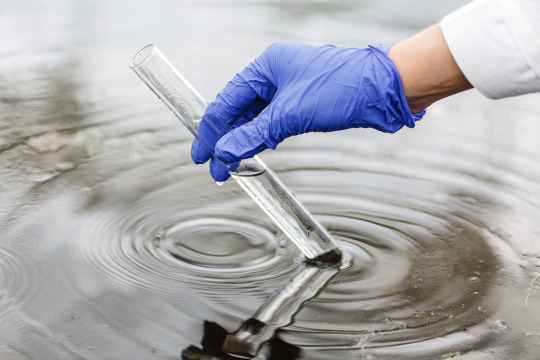
1. Protecting Public Health
One of the primary benefits of wastewater treatment is the protection of public health. Contaminated water can harbor pathogens, chemicals, and pollutants that pose significant risks to human health if left untreated. By removing contaminants and pathogens from wastewater, treatment plants ensure that waterborne diseases are prevented, safeguarding the health and well-being of communities.
2. Preserving Water Resources
Wastewater treatment plays a crucial role in preserving water resources by recycling and reclaiming water for various purposes. Treated wastewater, also known as reclaimed water, can be used for irrigation, industrial processes, and even potable water supply with appropriate treatment. By reclaiming wastewater, treatment plants reduce the demand for freshwater sources, alleviate pressure on water supplies, and promote sustainable water management practices.
3. Mitigating Environmental Pollution
Untreated wastewater can contain a variety of pollutants, including nutrients, heavy metals, and organic compounds, which can degrade water quality and harm aquatic ecosystems. Wastewater treatment removes these pollutants, reducing the risk of environmental pollution and supporting the health and integrity of ecosystems. Clean water discharged from treatment plants helps maintain biodiversity, support fisheries, and preserve natural habitats.
4. Promoting Resource Recovery
Wastewater treatment plants are increasingly adopting resource recovery technologies to extract valuable resources from wastewater streams. These resources may include energy, nutrients, and biosolids, which can be reused or repurposed in various applications. For example, biogas generated from anaerobic digestion of wastewater sludge can be used to generate electricity or heat, while nutrient-rich biosolids can be used as fertilizer in agriculture.
5. Fostering Economic Development
Investments in wastewater treatment infrastructure and technology contribute to economic development by creating jobs, stimulating innovation, and attracting investment. Sustainable wastewater management practices can enhance the resilience of communities to environmental challenges and promote long-term economic growth and prosperity.
Challenges and Future Directions
While wastewater treatment plays a vital role in sustainable development, it faces challenges such as aging infrastructure, emerging contaminants, and climate change impacts. Addressing these challenges requires investment in infrastructure upgrades, adoption of innovative technologies, and implementation of integrated water management approaches. Additionally, raising awareness about the importance of wastewater treatment and promoting water conservation practices are essential steps in ensuring the long-term sustainability of water resources.
Conclusion
Wastewater treatment is a cornerstone of sustainable development, providing essential services for protecting public health, preserving water resources, and mitigating environmental pollution. By transforming contaminated water into a valuable resource, wastewater treatment contributes to the resilience and well-being of communities and ecosystems worldwide. Through continued investment, innovation, and collaboration, we can ensure that wastewater treatment remains an integral part of sustainable development efforts, promoting a future where clean water is accessible to all while safeguarding the health of the planet.
0 notes
Text
0 notes
Link
California regulators approved new rules last month to enable water suppliers to treat wastewater and redistribute it as drinking water. The state says that the new standards, which took years to craft, are the most advanced in the nation for treating wastewater and will add millions of gallons of additional drinking water to state supplies. But hurdles, including stigmas that surround what’s known as “direct potable reuse,” persist. We talk about California’s new approach to wastewater recyclin
0 notes
Text
California's New Regulations: Reclaiming Wastewater for Drinking Water
California is taking a significant step towards securing its water future with new regulations that allow for the reclamation of wastewater for normal home uses, including drinking water. The state Water Resources Control Board recently approved these regulations, marking a groundbreaking development in water management.
The concept behind the regulations is known as Direct Potable Reuse (DPR),…
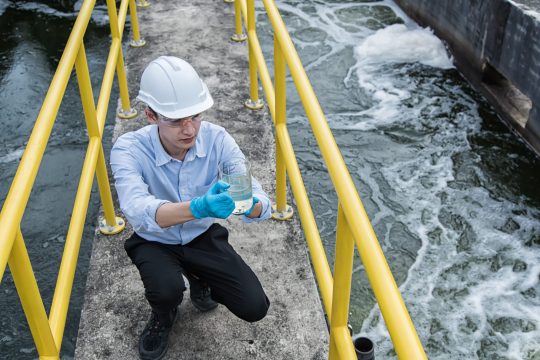
View On WordPress
0 notes
Text
Promote sustainable living with greywater treatment!!!
In the pursuit of sustainable living and responsible water management, Ecovie stands as a pioneer, advocating for and implementing innovative solutions such as greywater recycling, greywater treatment, and rainwater harvesting. The importance of these practices extends beyond individual households to contribute significantly to water conservation efforts, environmental stewardship, and the creation of resilient communities.
Greywater recycling, a cornerstone of Ecovie's initiatives, involves the collection and treatment of gently used water from sources like showers, sinks, and laundry machines. Instead of allowing this water to flow down the drain, greywater systems capture and filter it for reuse in irrigation and toilet flushing. The significance lies in mitigating the strain on freshwater resources by repurposing water that is still suitable for non-potable purposes. The commitment to greywater recycling aligns with the ethos of sustainable living, where every drop of water is treated as a valuable resource rather than a disposable commodity.
Greywater treatment, another vital component of mission, elevates the practice of recycling by ensuring that reclaimed water meets high-quality standards. Through advanced treatment technologies, company addresses concerns related to contaminants and pathogens, making the recycled greywater safe for use in various applications. This dual focus on recycling and treatment not only conserves water but also enhances the overall efficiency and safety of the process, establishing a model for responsible water reuse.
Rainwater harvesting complements greywater recycling by tapping into an additional source of untapped water – rain. This practice involves capturing rainwater from roofs and surfaces, directing it through a filtration system, and storing it for later use. The importance of rainwater harvesting lies in its ability to reduce reliance on traditional water sources, especially during periods of drought or water scarcity. It empowers individuals, businesses, and communities to harness the power of nature, turning rainfall into a sustainable water supply for landscaping, flushing toilets, and other non-potable uses.
Ecovie's integrated approach to water sustainability underscores the interconnectedness of these practices, forming a holistic water management solution that benefits both individual users and the environment at large. By promoting the adoption of greywater recycling, it contributes to water conservation efforts, reduces the carbon footprint associated with water treatment and distribution, and fosters resilience in the face of changing climate conditions.
Beyond the immediate environmental impact, the importance of initiatives also extends to the financial and social realms. As communities face the challenges of water scarcity and rising utility costs, the adoption of sustainable water practices becomes a financially prudent and socially responsible choice. The solutions empower individuals and organizations to take control of their water usage, reducing dependence on centralized water infrastructure and fostering a sense of self-sufficiency. The dedication to greywater recycling exemplifies a commitment to a more sustainable and resilient future. By embracing these innovative water management practices, individuals and communities can contribute to a world where water is revered, reused, and respected as a finite resource. The initiatives not only reflect a progressive approach to water sustainability but also serve as a beacon, inspiring others to join the movement towards responsible and conscientious water stewardship.
0 notes
Text
Lakeland pilot project aims to meet the growing demand for clean drinking water
As Polk County’s population grows, so does the demand for clean drinking water, and an innovative pilot project in Lakeland may be a solution to that problem.
The “Direct Potable Reuse” Pilot Facility, adjacent to the Cherry Hill Water Production Facility off Raulerson Road, treats 14,400 gallons per day of reclaimed water from the Northwest Wastewater Treatment Facility and turns it into…
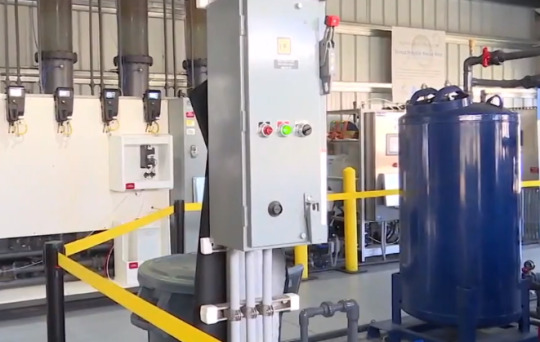
View On WordPress
0 notes
Text
Eco-Friendly Car Wash: Clean Your Ride while Saving the Planet
In today's world, sustainability and environmental consciousness are becoming increasingly important. Even in the seemingly simple task of washing your car, you can make a positive impact on the planet. In this blog post, we'll explore eco-friendly car wash practices that will not only keep your ride sparkling clean but also contribute to a greener, cleaner environment:
1. Waterless Car Wash Solutions:
Traditional car washes can use an excessive amount of water, contributing to water wastage and pollution. Consider using waterless car wash solutions that require little to no water, yet effectively clean your car's surface. These products contain lubricants and surfactants that encapsulate dirt particles, allowing them to be safely wiped away without scratching the paint.
2. Use Biodegradable Car Wash Soaps:
If you prefer a water-based car wash, choose biodegradable car wash soaps. These products are formulated to break down naturally without harming aquatic life or contaminating water sources.
3. Opt for Eco-Friendly Cleaning Tools:
Replace traditional sponges and wash mitts with eco-friendly alternatives. Microfiber wash mitts are not only effective at cleaning but also trap dirt and debris efficiently, reducing the need for excessive scrubbing.
4. Capture and Reuse Water:
If you decide to go with a traditional car wash using water, try to capture and reuse the runoff. Use a bucket or a rainwater harvesting system to collect the water, which can then be used for non-potable tasks like watering plants or cleaning other outdoor surfaces.
5. Choose Environmentally Conscious Car Wash Facilities:
If you prefer a professional car wash, look for facilities that prioritize eco-friendly practices. Some car wash businesses employ water recycling systems, use biodegradable products, and implement energy-efficient technologies.
6. Clean in the Shade:
Washing your car in direct sunlight can cause water and soap to evaporate quickly, leading to water waste and streaky surfaces. Choose a shaded area to clean your car, ensuring you use water more efficiently.
7. Avoid Hosing Down Driveways:
When rinsing your car, avoid hosing down driveways or sidewalks, as it can carry pollutants and chemicals into storm drains and waterways. Direct the runoff to permeable surfaces like lawns or gravel areas instead.
8. Skip Unnecessary Cleaning:
Don't wash your car excessively. Instead, clean it when it's visibly dirty or after driving on salt-covered roads during the winter months. Over-washing can strip away protective coatings and waste resources.
9. Eco-Friendly Interior Cleaning:
For interior cleaning, use eco-friendly products like plant-based cleaners and microfiber cloths. Avoid harsh chemicals that can release harmful fumes into the air.
10. Spread the Word:
Encourage your friends and family to adopt eco-friendly car wash practices. By raising awareness about the importance of sustainability, we can collectively contribute to a cleaner planet.
By embracing eco-friendly car wash practices, you can enjoy a spotless ride while doing your part in preserving the environment for future generations. Let's make every car wash a green initiative and drive towards a cleaner, greener future!
0 notes
Text
ADVOCACY ENVIRONMENT
Recycle, reduce, and reuse have been the mantra of environmentalists for many years, and it still holds true today. A more sustainable and biocentric worldview can still be promoted by tiny, everyday gestures, even though systemic change is required to change our current direction. Thought and deed taken together have the power to change things for the better.
1). RECYCLING-In 2018, the United States alone produced 292.4 million tons of solid garbage, or almost five pounds per person daily. Everything from food and technology to bottles, cartons, and furniture is included in this garbage. By recycling, giving, and using recovered energy, a significant portion of the trash can be diverted.

2). CONSERVING WATER-The typical American household uses 80 to 100 gallons of water per person each day. The UN estimates that the average person only requires 5.3 to 13.2 gallons of water each day. The most valuable resource we have is probably potable water because we cannot live without it. Reduce how frequently you shower, wash your car, do the laundry, wash the dishes, and engage in other water-intensive activities to reduce how much water you use. Alternately, you may switch to water-saving gadgets like a composting toilet.
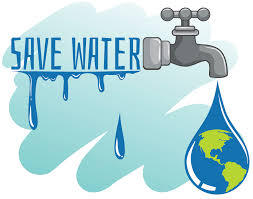
3). CHOOSING ALTERNATIVES TO DRIVING-According to the EPA, the typical passenger car emits about 4.6 metric tons of carbon dioxide annually. Every day, more automobiles leave the assembly lines, and the total amount of pollutants produced by all the moving parts is concerning. Consider biking, walking, or taking public transportation to get to your location if driving isn't absolutely necessary for you.
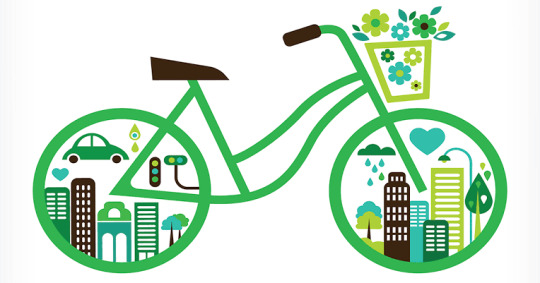
4). SAVING ELECTRICITY-According to the EPA, the typical passenger car emits about 4.6 metric tons of carbon dioxide annually. Every day, more automobiles leave the assembly lines, and the total amount of pollutants produced by all the moving parts is concerning. Consider biking, walking, or taking public transportation to get to your location if driving isn't absolutely necessary for you.

5). BUYING USED-According to the World Economic Forum, the garment industry alone is responsible for 10% of global emissions, and 85% of textiles are disposed of in landfills annually. We could divert a sizable quantity of waste from landfills and use less energy in the manufacture of new goods if more people choose to purchase secondhand clothing, furniture, homes, and appliances.

6). USING REUSABLE CONTAINERS-According to the UN, 300 million tons of plastic garbage are produced annually by people. In addition to increasing emissions, the manufacture of plastic damages wildlife and contaminates rivers by ending up in the oceans and streams. Think about switching to Tupperware, paper straws, mason jars, beeswax wraps, reusable water bottles, biodegradable packaging, and other more environmentally friendly alternatives.
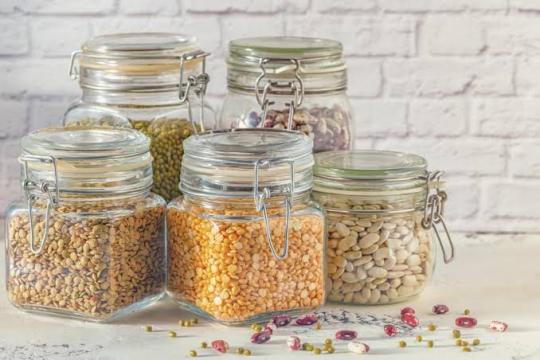


0 notes
Text
CidalTek OPA
Description:
High Level Disinfectant For Reprocessing Heat Sensitive Semi-critical Medical Devices.
CidalTek OPA disinfects heat-sensitive semi-critical medical devices which are unable to process for sterilization. CidalTek OPA can be used manually or in an Automated Endoscope Re-processor (AER).
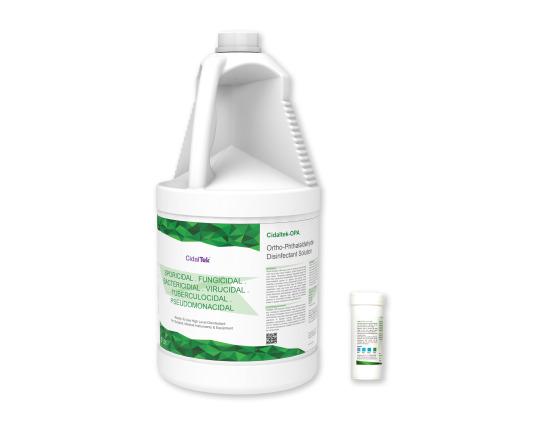

Salient Features:
Disinfects a wide range of endoscopes and other heat-sensitive semi-critical medical devices
Designed for both automated and manual instrument reprocessing
Disinfects in 12 mins at 20°C. Material Compatible nature
When used in an AER, it disinfects in 5 minutes at 25°C in an AER and can be reused for up to 14 days (when monitored according to label instructions)
Direction Of Use:
CLEANING/DECONTAMINATION
Blood, other body fluids, and lubricants must be thoroughly cleaned from the surfaces and lumens of medical devices before reprocessing in the disinfectant.
Use a cleaning protocol or standard such as US ASTM F1518.
Blood and other body fluids should be disposed eff.
Refer to the reusable device manufacturer’s labelling for interaction on disassembly, decontamination, cleaning and leak testing of their equipment.
Thoroughly rinse and rough dry all surfaces and lumens of cleaned devices before immersing in Medntek OPA Solution.
HIGH LEVEL DISINFECTION
Immerse device completely in Medntek OPA Solution, filling all lumens and eliminating air pockets, for a minimum of 5 minutes at 20° C (68° F) or higher to destroy all pathogenic microorganisms, including Mycobacterium bovis, Pseudomonas aeruginosa, pathogenic fungi, and viruses.
Remove device from the solution and rinse thoroughly with sterile water or with potable tap water.
The type of rinse water is dependent upon the intended use of the device.
Please refer package insert for additional instructions and information regarding high level disinfection.
Note: - Product should be used in accordance with label instruction
Area Of Application:
Pharmaceutical, Hospital, Medical colleges, Laboratories where heat sensitive semi-critical medical devices which are unable to process for sterilization.
Microbial Efficacy:
Bactericidal, Fungicidal, Yeasticidal, Virucidal ,Sporicidal, Tuberculocidal , Pseudomonacidal.
0 notes
Text
Okay, so maybe this won’t help me as much as I think it will, but now that my mind is back to it:
There’s been several reasons that I don’t have a set and final design, more like multiple potential final designs for that property. There’s even one where I build most of it over with a hacienda-type structure and rent out a room or two, but that one was thought of in the desperation of being locked up in that leaky toilet of a building with government subsidy.
3 notes
·
View notes
Text
I do have a desire to go ham on that drinking water post but I don't wanna be annoying so I'll put some thoughts here:
- to all the people in Australia (Sydney I saw the most) enjoying recycled water, I love you, direct potable reuse (water treated from wastewater & immidiately put back in the safe to drink system) is the future
- someone in Denmark I think mentioned that their drinking water is used in their toilets as well? almost every place (at least in my experience) does this. if you're in city (not well) water, the water in your toilets is most likely the same as the water in your tap.
- For City Water (not well water): Depends on where you are in the world. Low-income and neighborhoods of color are historically most at risk to have bad drinking water. Even if you're serviced by the same treatment plant as wealthier neighborhoods, the pipes carrying the treated water to your home are probably old, and can cause problems (see places like Flint MI and Newark NJ). If you're concerned and able, get a test kit for your home, talk to your neighbors, research to see if anyone else has brought up concerns. If many people have concerns and you don't trust your local government (which, after Flint, is totally understandable), you can try reaching out to a local university, especially if they have a research lab dealing with drinking water.
- For Well Water: It still depends on where you are in the world! You're taking water from an aquifer, which is basically an area of soil saturated with water. This water is usually good because it's "filtered" by sinking through many layers of sediment before it gets to the aquifer. However if you live near, or downstream of, an industrial site, chemical plant, military facility, etc, do some research to make sure there haven't been concerns raised about those places contaminating the aquifer. Check your filters the recommended amount and if you can, get a test kit for the well water and test it after it's gone through the filter.
1 note
·
View note